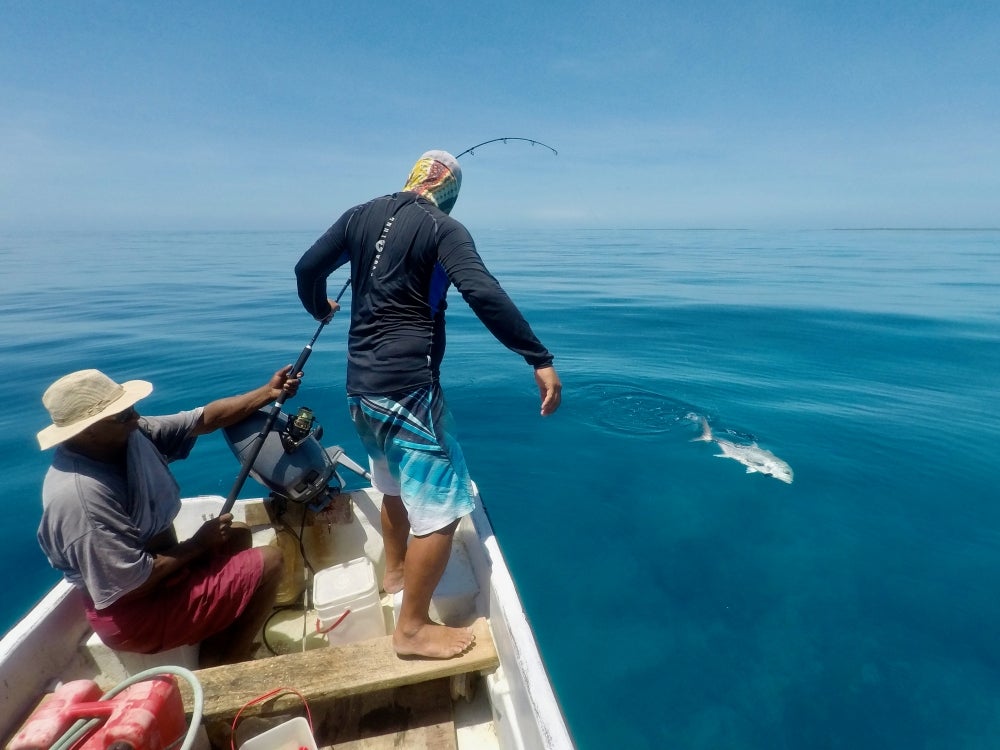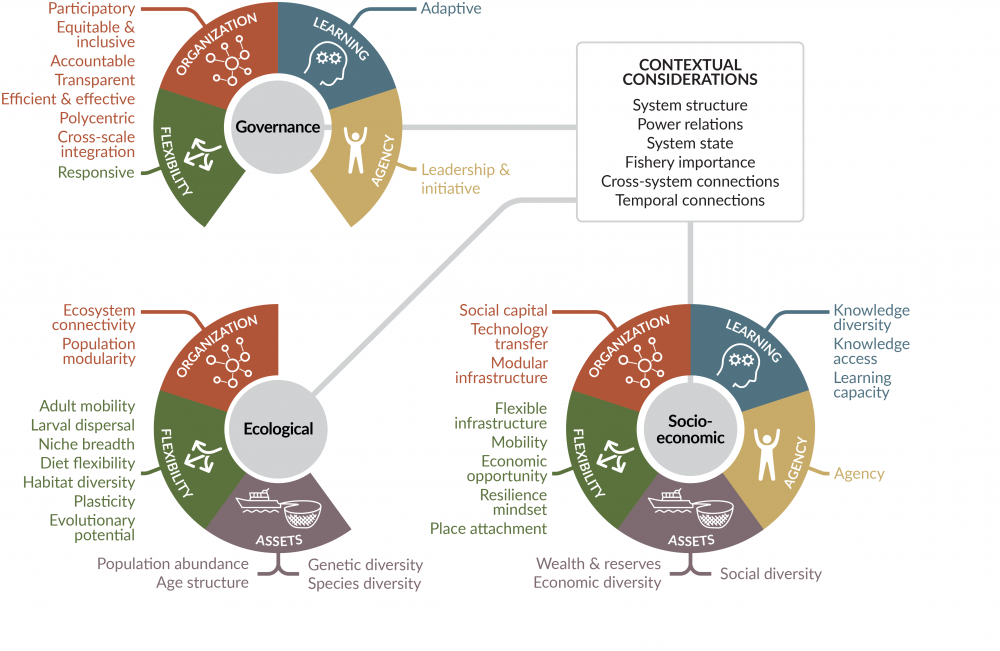
Resilient Fisheries

A new decision-making framework designed by an international team of fisheries researchers can help fisheries bolster their ability to adapt to a warming world. The tool, said marine ecologist Jacob Eurich at UC Santa Barbara’s National Center for Ecological Analysis & Synthesis (NCEAS), is meant to take a lot of the guesswork out of finding resilience in a time of climate change.
“Our goal is to be able to throw any fishery in this framework and pull out the bright spots and dark spots,” Eurich said. “And the idea is that a stakeholder group could then look at this framework and say, ‘Here are the three attributes that we should focus on, first and foremost, that will give us the biggest impact moving forward.’” By giving fisheries the ability to identify actions based on their specific needs, priorities and conditions, they, and the communities that rely on them, are empowered to implement policies and other measures that could help them withstand the various effects of a warming Earth.
The research is published in the journal Fish and Fisheries
What Is Resilience?
As the global population continues to rise, fisheries are being called upon to provide an increasing amount of the world’s food. They also are among the first food systems to experience the effects of climate change, as waters warm and oceans acidify.
“The frequency and severity of climate impacts are increasing, and we can project future scenarios with various modeling techniques to look at which fisheries might be in a more negative space in the coming decade,” said Eurich, the co-lead author on the paper with Jacqueline Lau at James Cook University and Julia Mason at the Cornell Atkinson Center for Sustainability, who took a deep, broad and holistic look at the notion of resilience across fisheries in this first-of-its kind study.
It’s no small feat. Global fisheries are diverse, from the large commercial enterprises down to smaller recreational and subsistence-based fisheries. They’re also subject to a variety of local demands, regulations and environmental effects.
“In California, for example, we had a severe heat wave from 2014 to 2016, and that impacted our local fisheries,” Eurich said of a marine heatwave and algal bloom that affected a number of fisheries near and along the coast, from commercial rock crab operations to razor clam fisheries, to Dungeness crab fisheries. What California coastal fisheries require to withstand environmental blows can be different from what the cod fisheries of the Northern Atlantic need, or what the tuna fisheries of the Pacific Islands require.
“The way that we’re thinking about resilience is the ability of a fisheries system to rebound, or adapt to something that’s changing, or an external shock,” he said.
To capture this idea, the researchers examined research and data on fisheries resilience across three dimensions.
“The first is the ecological system — what’s going on underwater; what’s happening to the fish stock as a population,” Eurich explained. “The second area is governance — how is the fishery actually managed? And the third — which has typically gotten the least attention out of the three dimensions — is the socio-economic dimension, and particularly the social aspect of fisheries, or the intrinsic value, attachment, or mindset we have. Usually we focus on the economic benefit, the population structure and the dynamics of the species, but we’re really trying to highlight the human dimension here.” History, culture and even political climate are given consideration in the assessment of resilience.

Photo Credit: COURTESY IMAGE
To these three dimensions, the researchers applied five resilience domains: flexibility, organization, learning, agency and assets. And from there they distilled and defined 38 attributes “that confer climate resilience.” The researchers then described how they apply to fisheries and provided illustrative examples of resilience attributes in action.
Lessons to Learn
Examining fisheries in this fashion would not only highlight particular strengths of a fishery but also shed light on potential risks and weaknesses that may arise as a result of climate change. For instance, according to the paper, the commercial California Dungeness crab fishery was considered to be robust due to high productivity and large population size. These qualities led to minimal management oversight and low perception of risk, which left the fishery “unprepared and slow to respond” to harmful algal blooms related to the marine heatwave of 2014-16. As a result, the fishery suffered significant economic losses.
The framework also allows managers to learn from other fisheries to better prepare for and respond to potential setbacks without having to reinvent the wheel. It relates to Eurich’s work in the South Pacific, where communities are already feeling the brunt of climate change-driven impacts.
“A lot of the South Pacific island nations have a very strong resilience mindset,” Eurich said. “As a nation and a people the population is very, very connected traditionally and functionally to their ocean system.” Resilience is a mindset which trends into the governance dimension, Eurich continued, and as a result, local governments have the ability to adapt and respond rapidly with policies and practices meant to mitigate the effects of climate change.
“We’re trying to take lessons from a place like Kiribati or Fiji and implement them in other places to show that adaptive management, equitable and inclusive thinking, or a more transparent system between people and their environments actually helps resilience moving forward,” he said.
This research resulted from the Science for Nature and People Partnership (SNAPP) Climate Resilient Fisheries Working Group, which convened 23 fisheries scientists and practitioners from seven countries at NCEAS.



